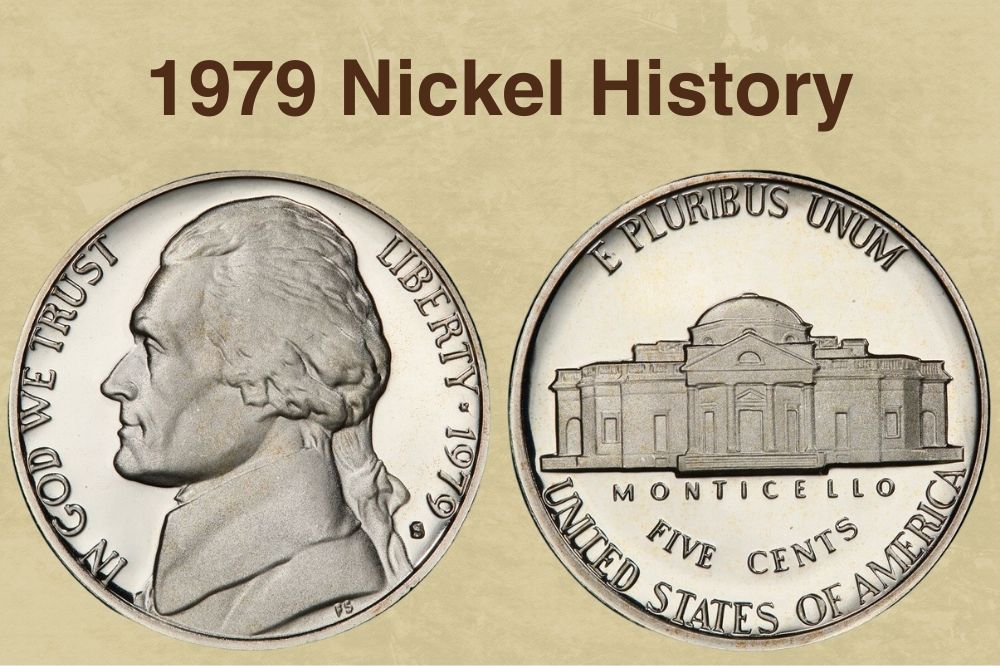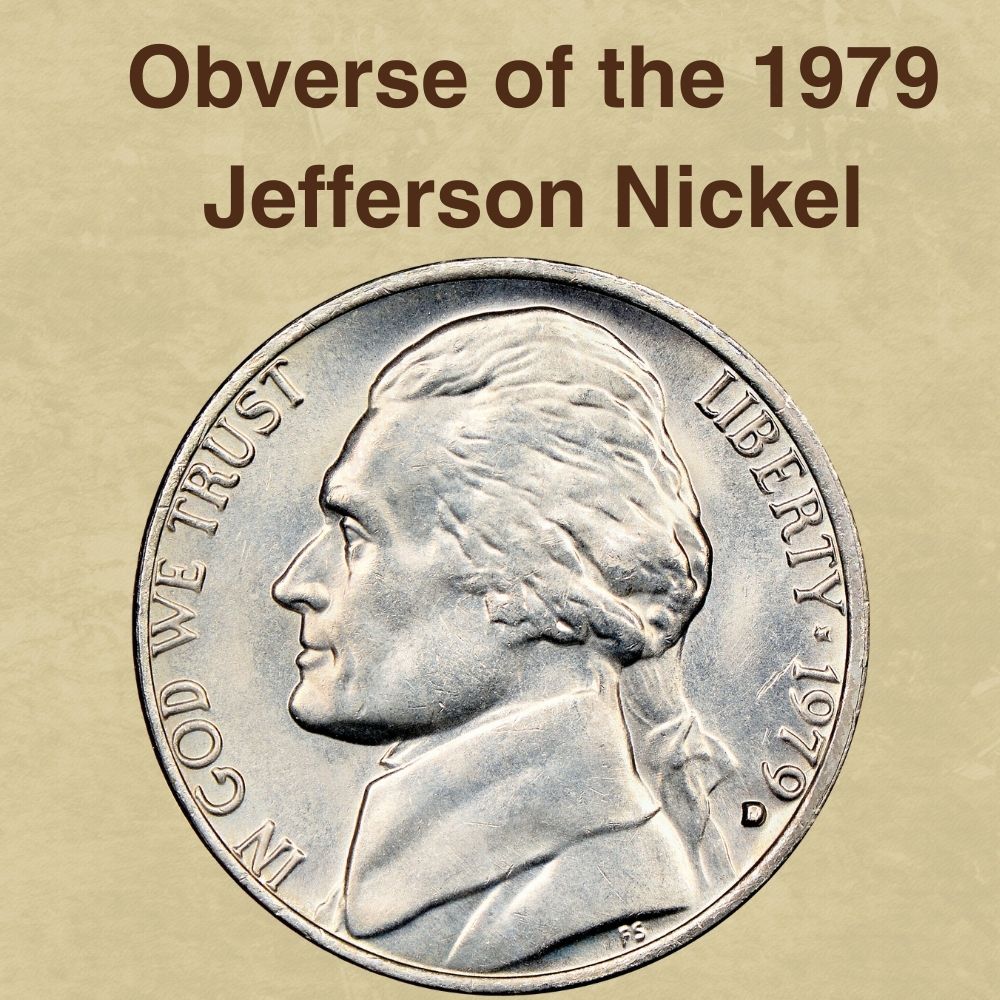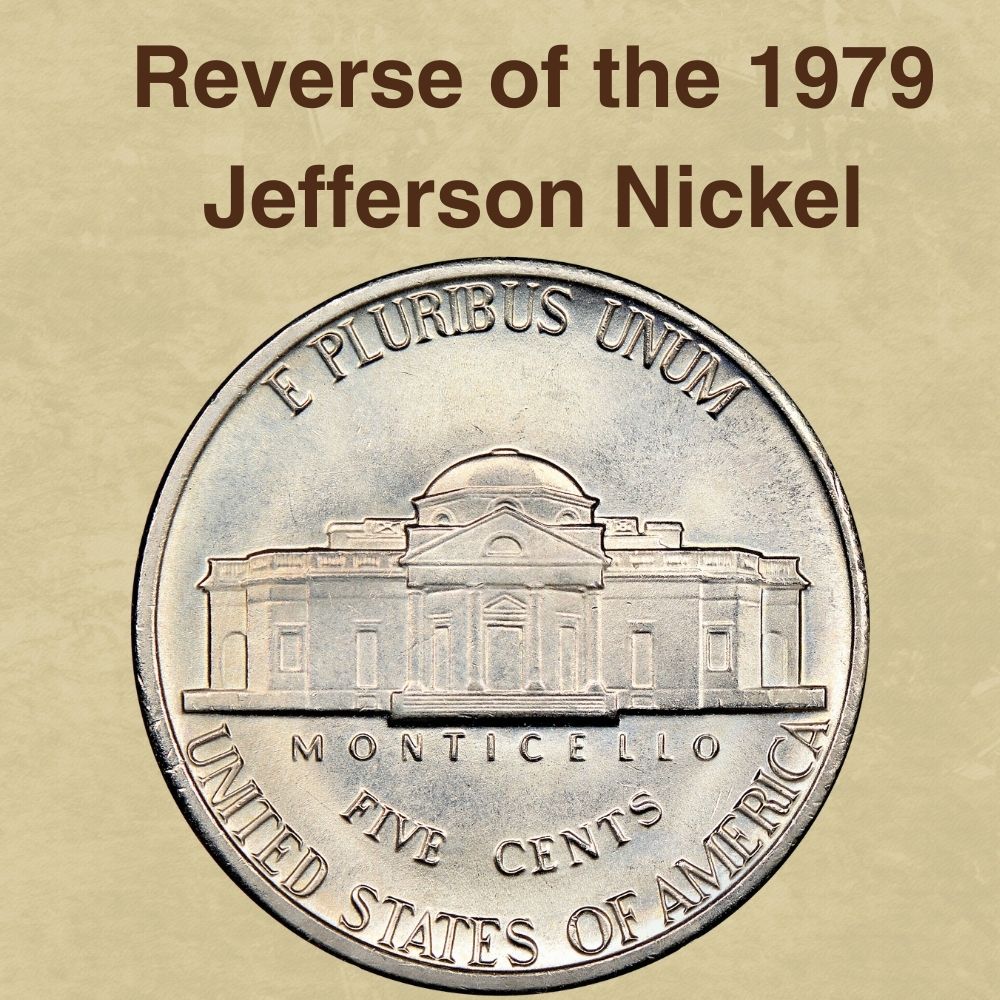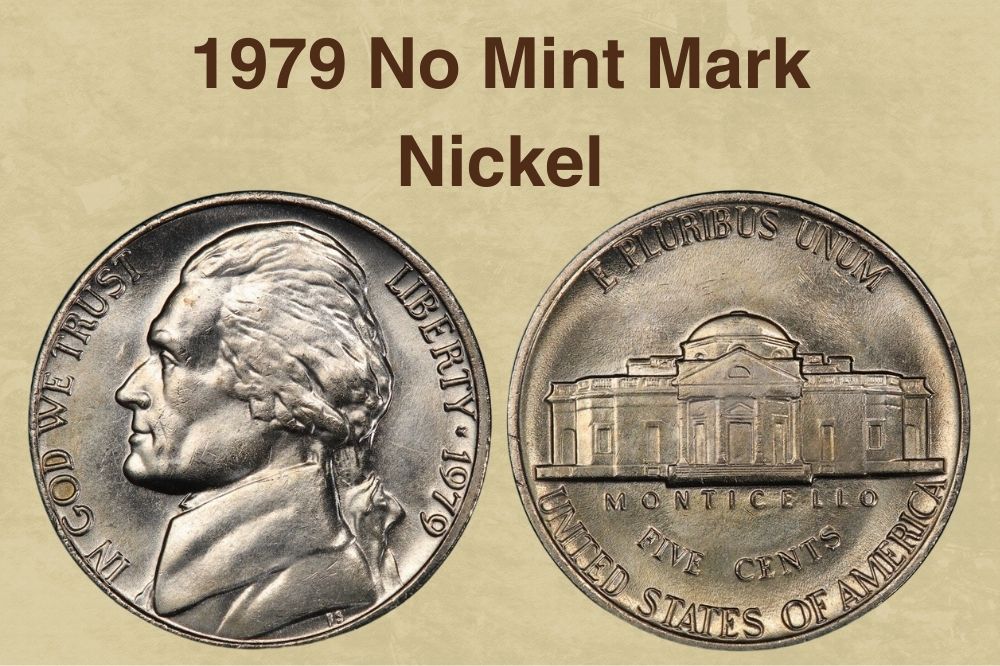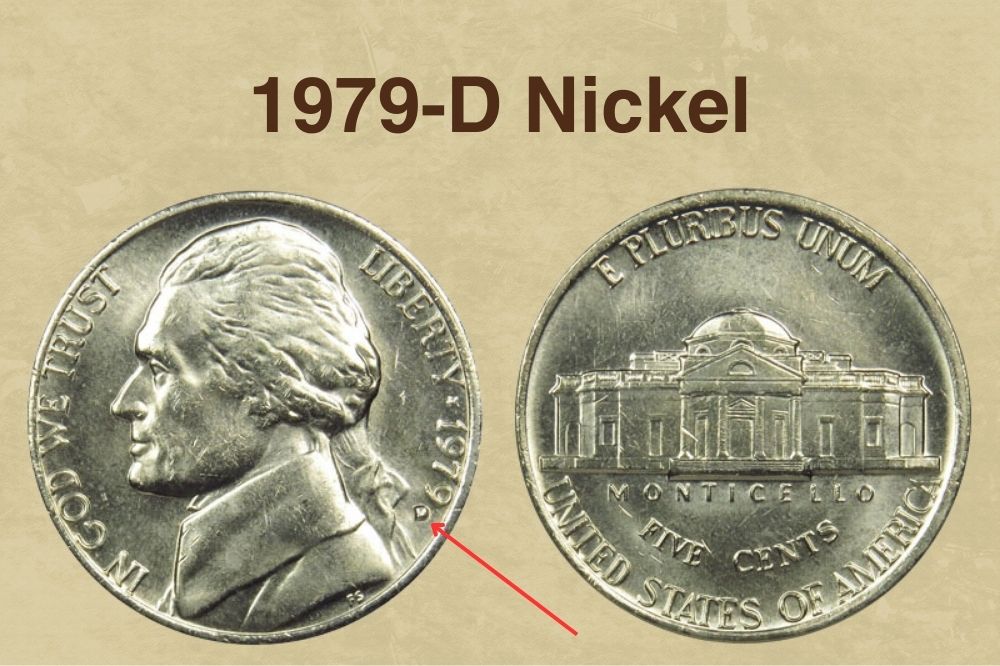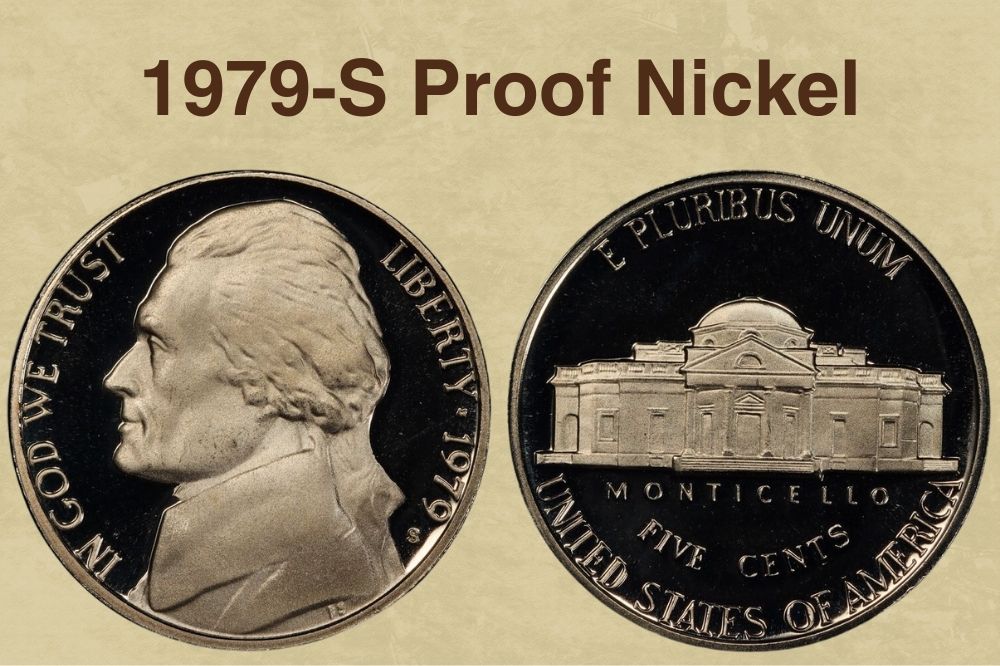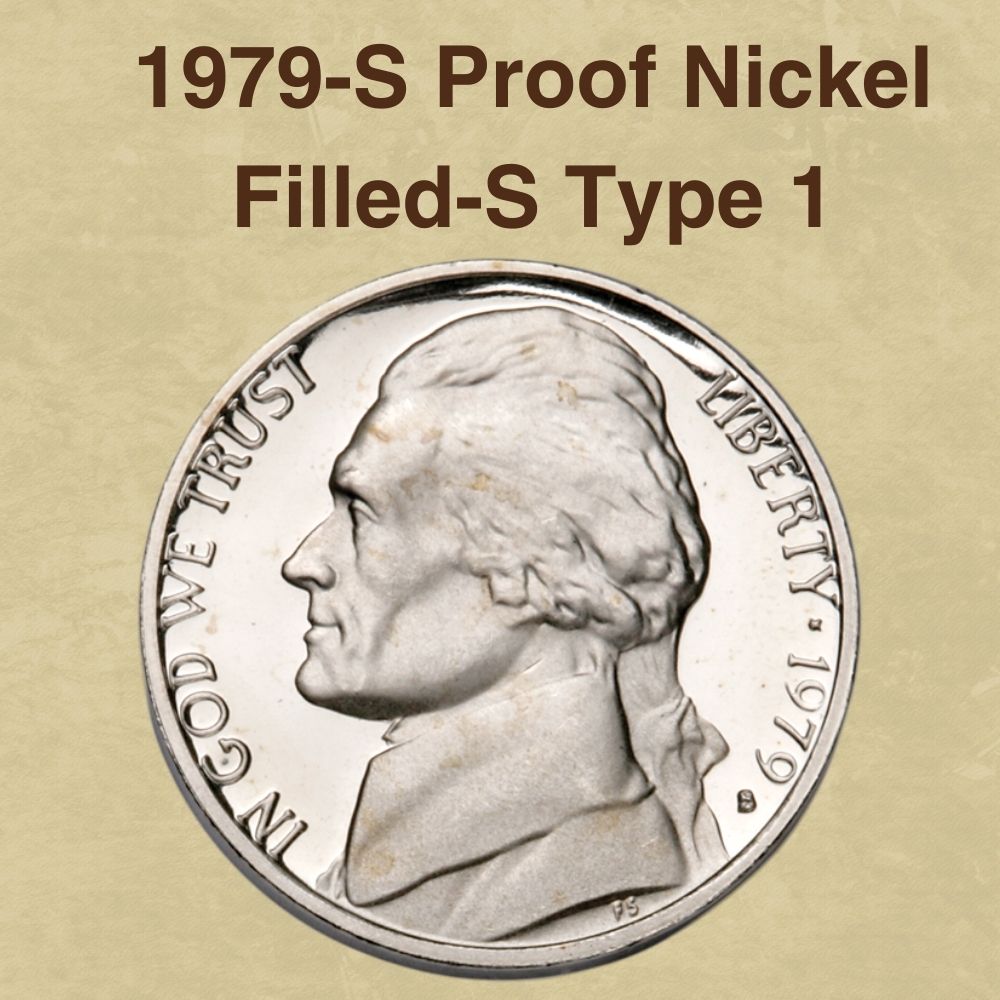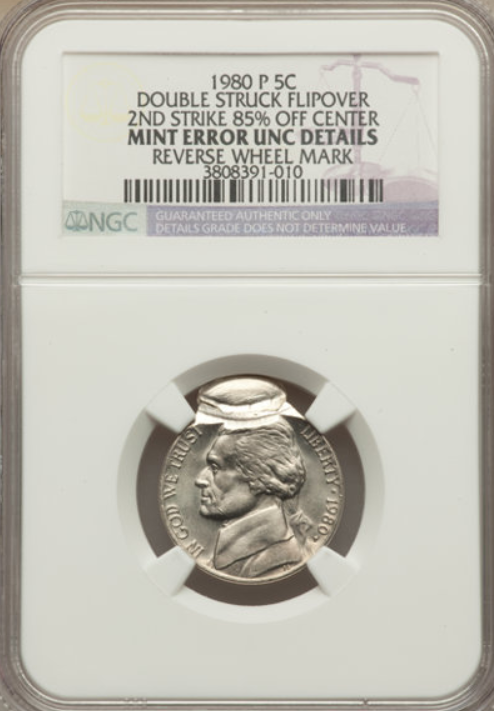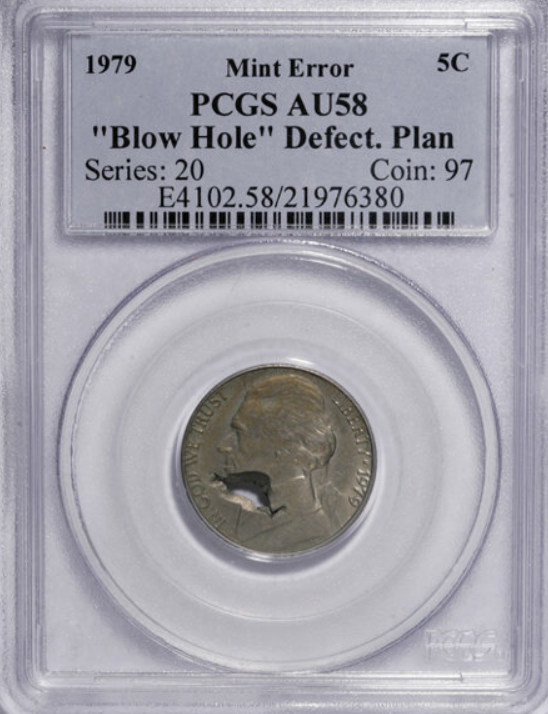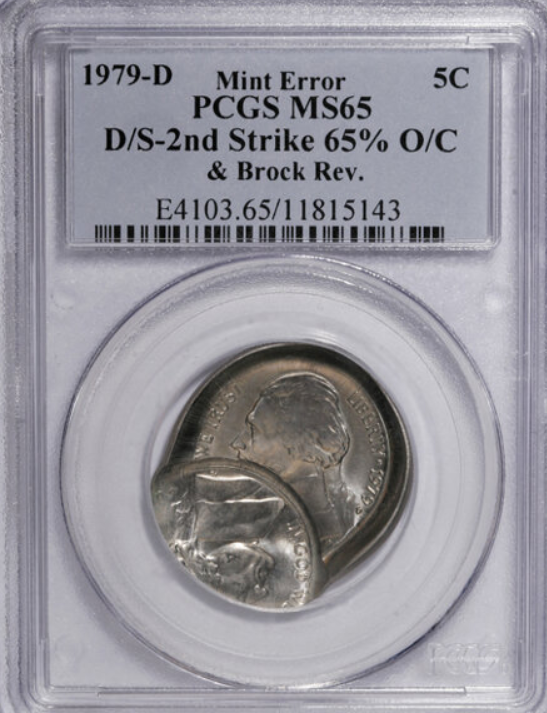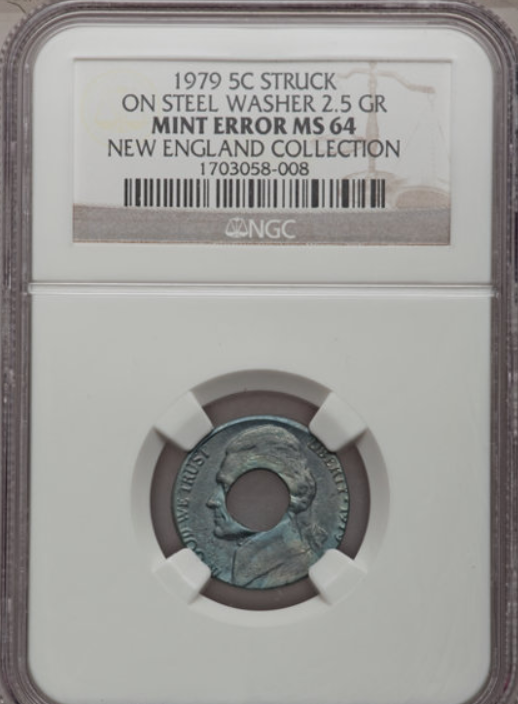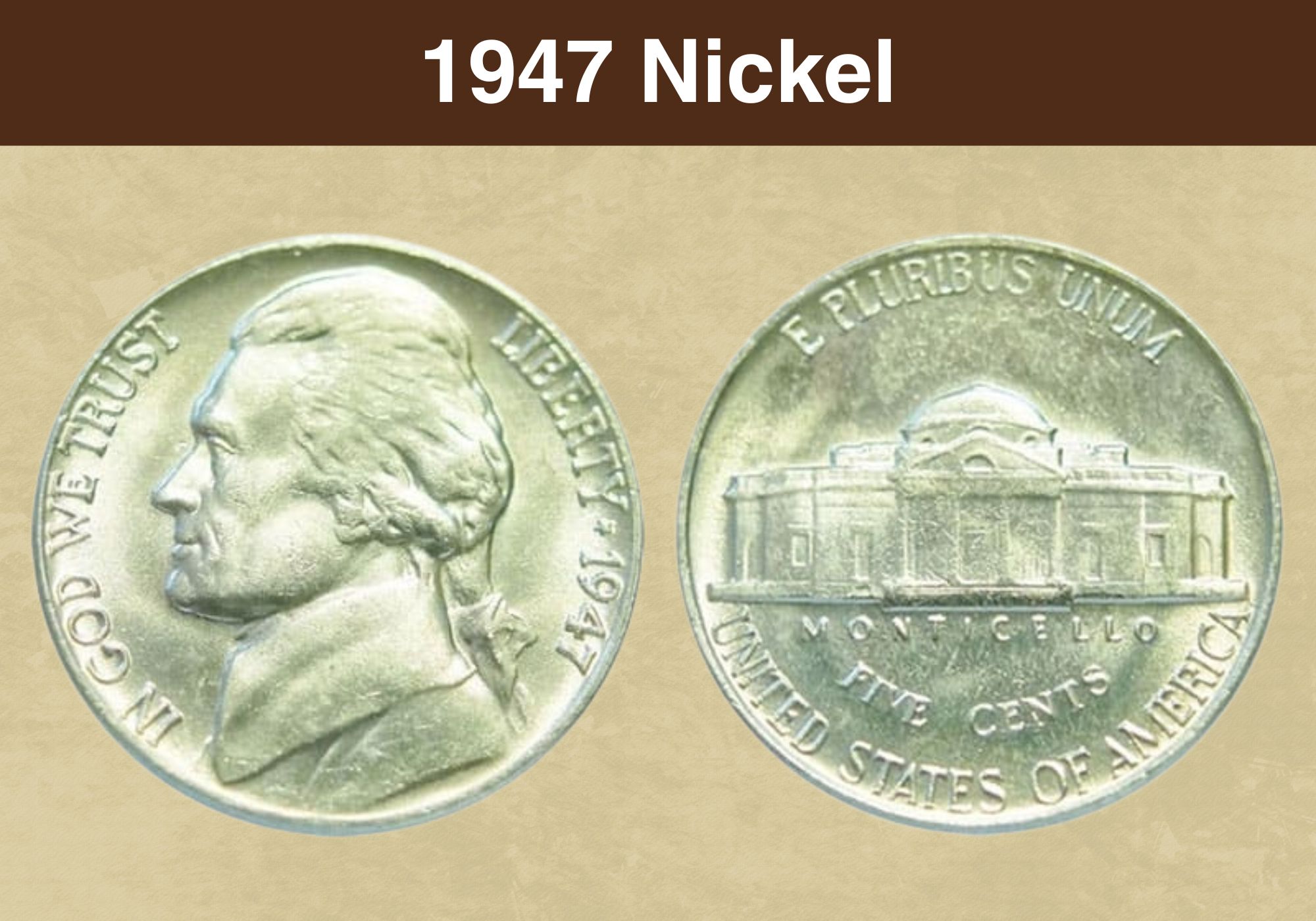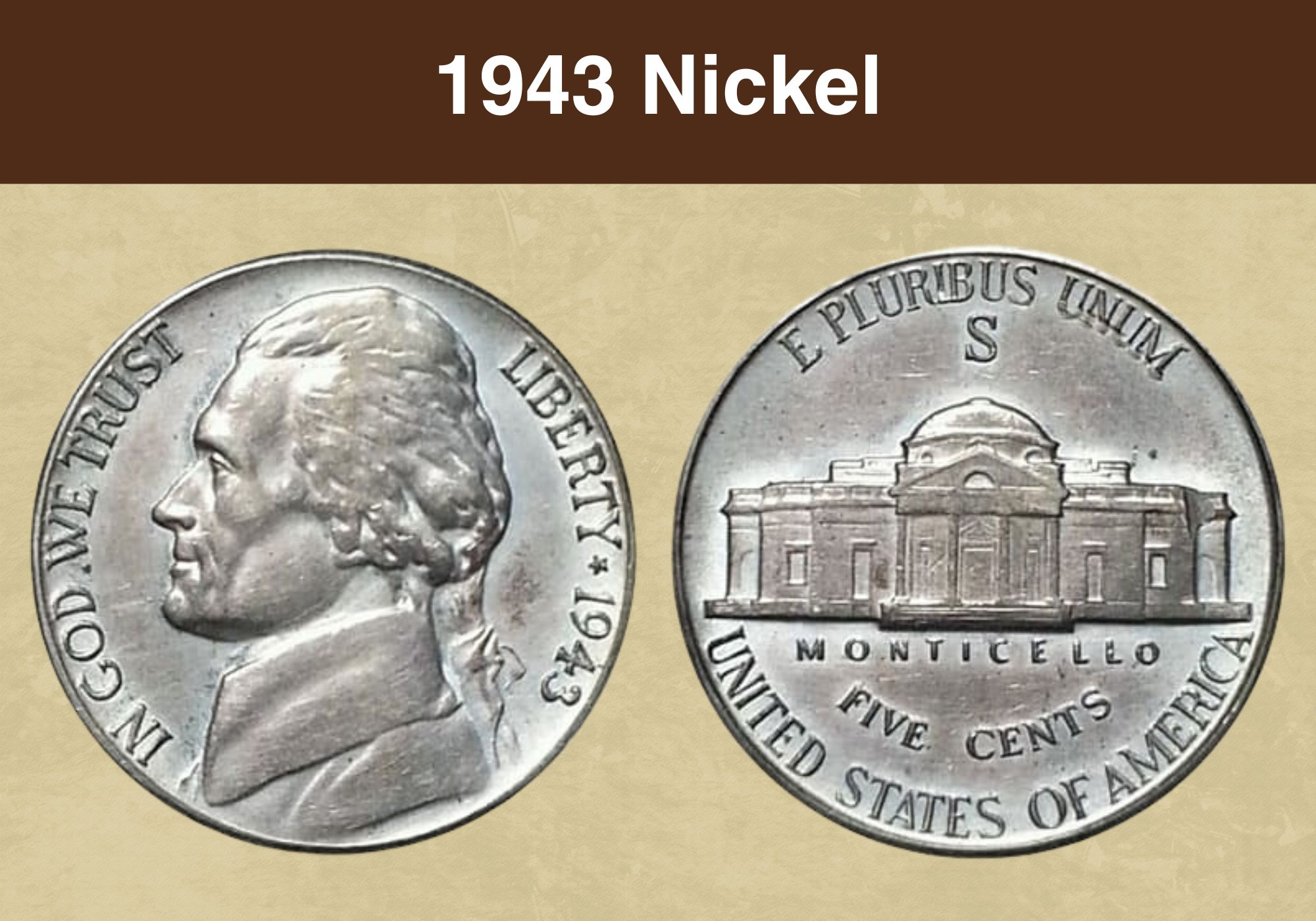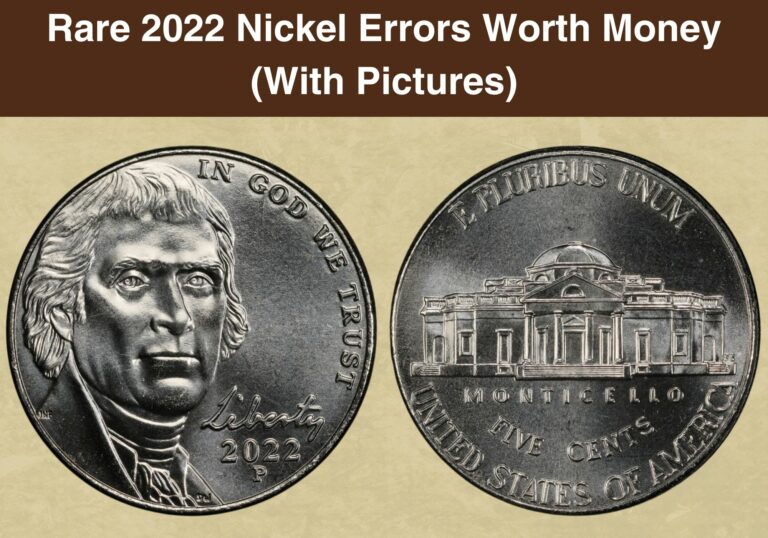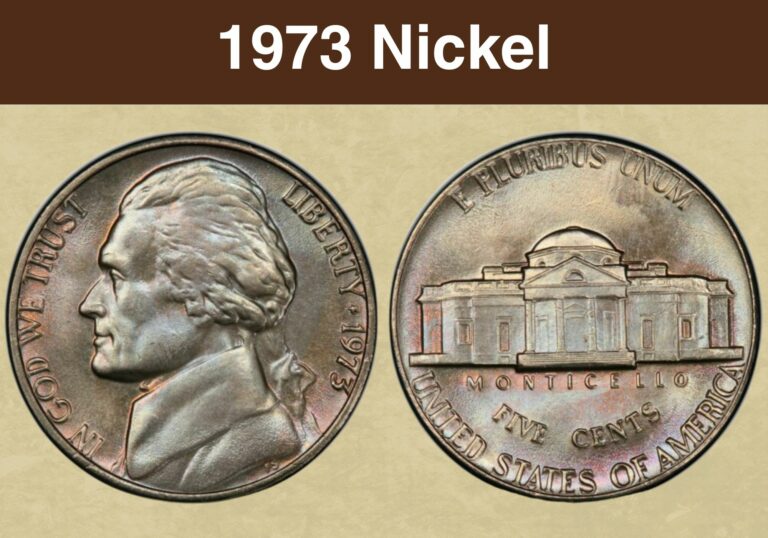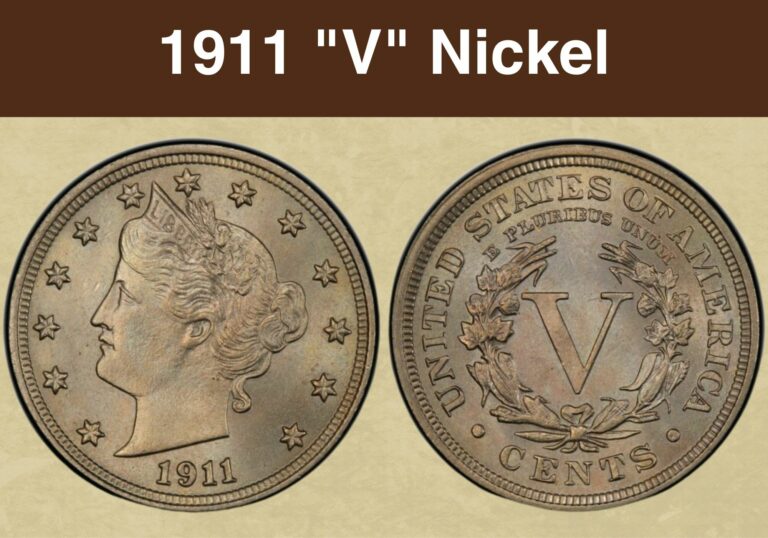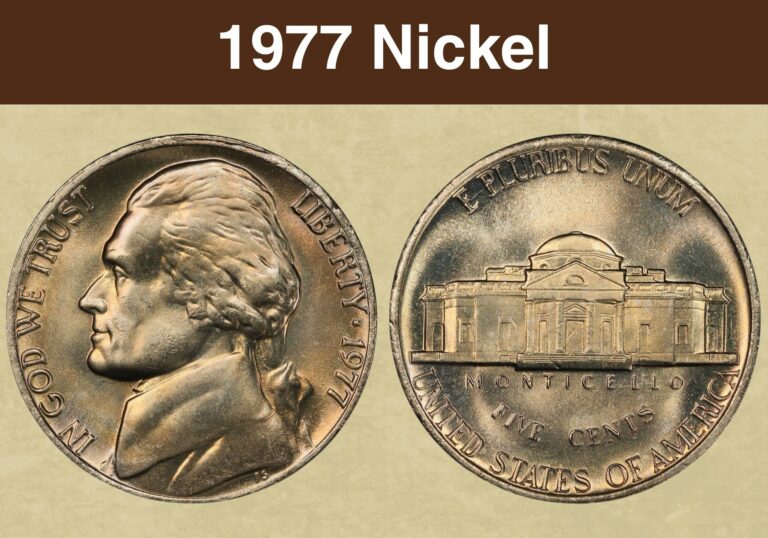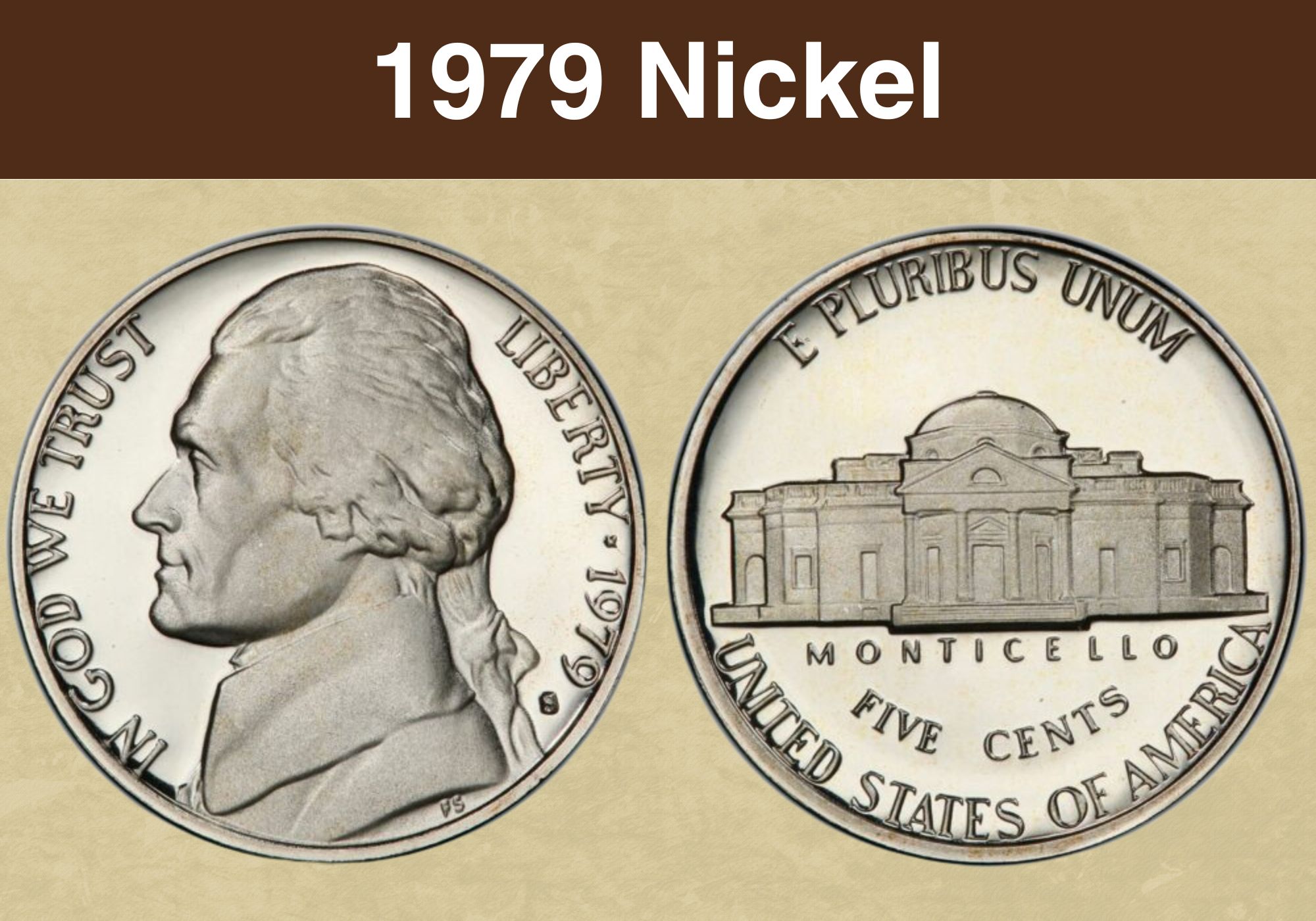
Coin Value Contents Table
In 1979, the US Mint introduced the Susan B. Anthony Dollar. This drove collectors’ interest in other denominations, including the Jefferson Nickel. That year, possibly due to the focus on the new coin, the 1979 Nickel acquired a dramatic mint error on its San Francisco variety. Let’s look at the 1979 Nickel Value, its history, and pertinent investment factors around it.
1979 Nickel Value Charts |
||||||
| Coin | MS 60 | MS 62 | MS 64 | MS 66 | MS 67 | PR/PF 70 DCAM |
| 1979 No Mint Mark Nickel | $1 | $3 | $10 | $80 | – | – |
| 1979 No Mint Mark Nickel (Full Steps) | $5 | $10 | $22 | $925 | – | – |
| 1979-D Nickel | $1 | $3 | $8 | $50 | – | – |
| 1979-D Nickel (Full Steps) | $2 | $4 | $14 | $135 | $8,250 | – |
| 1979-S Proof Nickel (Type 2 Clear-S) | – | – | – | – | – | $300 |
1979 Nickel History
A nickel is a 5c coin, both in the US and in Canada. And here in America, it became a nickel when it shed its silver. Before that, it was a precious metal coin known as a half dime, though they sometimes spelled it half disme and pronounced it half deem. Then during the Civil War, citizens began to hoard gold and silver coins as a survival strategy so currency disappeared.
Minting more coins didn’t solve the problem so the government started making small bank notes worth three to five cents. Because these weren’t centralized, every state and region had its own version, leading to lots of fake money. So the US Mint started experimenting with base metal coins. They produced a cupronickel 3c. When it took root, they expanded to 5c.
The mint started making cupronickel 3c pieces in 1865. One year later, cupronickel 5c pieces joined the club in 1866. Soon after, they stopped making Silver 3c and 5c coins in 1873. From 1866, the nickel was 75% copper and 25% nickel, an alloy that it still uses today. This mix of metals proved so popular that it now forms the outer clad coating of most circulating coins.
Placing Jefferson on the Nickel
Starting in 1938, the nickel changed from the Buffalo to the Jefferson. This coin had the 3rd US President on the front and his Virginia mansion on the back. And that’s the design it had in 1979. Today, it has a new portrait of Jefferson on the heads side. In 2004 and 2005, the tails side was redesigned to commemorate the Lewis and Clarke expedition. Then it reverted.
While the nickel is mostly copper, the mint wanted to retain its silver sheen so the alloy was chosen for its glossy grey appeal. It was also a cost-cutting measure that puttered along for a few decades. But by 2020, it cost 7c to make a single nickel and in 2023, it’s up to nearly 11c. And while other denominations have Silver Proofs, the Jefferson Nickel is always base metal.
The only time nickels had any silver in them was during the War Years from 1942 to 1945. At that time, nickel and copper were urgently needed for military equipment and weaponry, so US coins cut down their base metal content. For the nickel, its copper content was reduced to 56% while the rest of the coin was 35% Silver and 9% Manganese. Mint marks changed too.
Also read: Top 10 Most Valuable Nickels Worth Money
Features of the 1979 Jefferson Nickel
When you talk about coins, you probably mention heads or tails. In technical terms, these are known as the obverse and reverse while the thin side is the edge and the raised border is the collar or rim. The ridges on some edges are called reeds. The words on a coin are mottos or legends. The images are devices, the background is the field, and the blank is a planchet.
The Obverse of the 1979 Jefferson Nickel
The device is Thomas Jefferson facing left, with the motto In God We Trust in front of his face. Behind his head, the legend Liberty is followed by a five-pointed star, the mint date, and the mint mark. FS is engraved under his shoulder cut-off for coin designer Felix Schlag.
The Reverse of the 1979 Jefferson Nickel
Monticello is the device, and its name is inscribed below the building, which fills the center of the coin. Under that, the face value, Five Cents, is in curved letters. This denomination is followed by United States of America. The top of the coin has the motto E Pluribus Unum.
Other Features of the 1979 Jefferson Nickel
As we mentioned, this coin is 75% Silver and 25% Copper. It measures 21.21mm in diameter and is 1.95mm thick. The coin has a smooth or plain edge (no reeds) and weighs 5g. Common mistakes on this coin include the upper nickel layer coming off to show the red copper below.
Also read: Top 17 Most Valuable Buffalo Nickel Worth Money
1979 Nickel Grading Guides
Coins are graded on the Sheldon Scale from 1 to 70, where 1 is Poor and 70 is Mint State. They also have an extra qualifier called Strike. It describes the clarity of the steps leading to Monticello on the back of the coin. On the best coins, you can easily count all six steps, but five visible steps can be valuable as well. These coins are known as 5FS or 6FS (Full Steps).
| # | Grade |
|---|---|
| 1 | Basal State-1 |
| 2 | Fair |
| 3 | Very Fair |
| 4, 5, 6 | Good |
| 7, 8, 10 | Very Good |
| 12, 15 | Fine |
| 20, 30 | Very Fine |
| 40 | Extremely Fine |
| 50 | About Uncirculated |
| 60 | Mint State |
| 65 | Mint State |
| 70 | Mint State |
Please check our grading guides to know your coin scale, It’s the necessary step to know the exact value of your coin.
Check out now: How to Grade Jefferson Nickel?
1979 Nickel Value Guide
In 1979, the US Mint made Jefferson Nickels in Philadelphia, Denver, and San Francisco. Each branch attracts its own premium, so this 1979 Nickel Value Guide will look at the coins individually. This price difference is typically driven by market demand and rarity, which are often a result of mint volumes. Business or regular strikes are for circulation and daily use.
1979 No Mint Mark Nickel Value
The Philadelphia Mint made 463,188,000 Nickels in 1979. They had no mint marks. On 30th July 2003, an MS 63 sold for $1,898. Twenty years later, it’s only worth $6. Three steps up, an MS 66 sells for $80 and PCGS has received close to fifty submissions in this grade. The highest grade so far is MS 66+ and it’s worth $110 in October 2023. PCGS has only seen one.
Meanwhile, an MS 66 FS sold for $2,115 on 6th January 2016. It’s still the highest known grade but more than twenty have shown up so their value is down to $925 in October 2023. As for MS 65 FS Nickels, PCGs has seen almost 40 pieces so their current estimate is $275. Sadly an MS 60 FS isn’t worth much – just $5. That’s still 10,000% of its face value – not bad.
1979-D Nickel Value
The Denver Mint coined 325,867,672 Nickels in 1979, all with the D Mint Mark. Ordinary coins don’t sell for very much these days. An MS 67 was $345 in 2008. It was an NGC-graded coin, and they’re usually cheaper than PCGS coins. That said, the highest grade submitted to PCGS so far is MS 66, and with twenty-five currently known, they’re $50 in October 2023.
Looking at Full Steps coins, an eBay vendor sold an MS 67 FS for $4,500 on 10th November 2022. No other coins have shown up in this grade so their value in October 2023 is $8,750. But seventy MS 66 FS are known, so their value is significantly lower at $135. And with over 150 Nickels graded MS 65 FS by PCGS, their October 2023 value is estimated at a paltry $22.
1979-S Proof Nickel Value
The most common type of proof coin is mirror-like, meaning it has a highly reflective field and a frosted device. Other types include reverse proofs (i.e. mirror-like device and frosted field) and matte proofs or satin-finish proofs, which have a grainy sandblasted texture. For mirror-like proofs, the hazy part of the coin can either be laser frosted or pickled with acid.
Laser frosting was introduced around 1971. Before that, acid-wash proof dies would fade a bit whenever they struck a blank, so the first 50 to 100 were Deep Cameos with extreme contrast while the next 50 to 100 were Cameo coins. On laser-frosted coins, almost every sample is a DCAM since the effect of the laser is permanent. In 1979, Proof Nickels came in two varieties.
Type 1, the FS-501 Filled-S, was a mint mistake. We’ll discuss it later in the Errors Section. For now, let’s look at Type 2, the Clear-S, which is the normal version of the coin. On 9th January 2008, a PR 70 DCAM sold for $2,530. But almost two hundred more have shown up so they’re worth $300 in October 2023. A PR 69 DCAM is $15. PCGS has seen over 7,500.
Also read: Top 17 Most Valuable Jefferson Nickels Worth Money
Rare 1979 Nickel Errors List
Mint mistakes can make a coin extremely valuable in the resale space. And the errors that are spotted within 30 days of a coin launch are called first-strike errors. These are listed with FS Numbers, and every coin has some well-known ones. On the 1979-S Nickel, the Clear-S and Filled-S varieties comprise FS-501. Let’s explore this flaw and other 1979 Nickel Errors.
1979-S Proof Nickel Filled-S Type 1
In the old days, dies were made in Philadelphia then sent to other mint branches where the mint mark was punched by hand. That’s why it was the last detail added to the master die, causing mistakes like RPMs (re-punched mint marks). On this variety, the S had filled loops so it looked solid and blurry. A PR 70 DCAM sold for $1,763 in 2013 but is only $80 today.
1979 (P) Nickel Struck 60% Off-Center
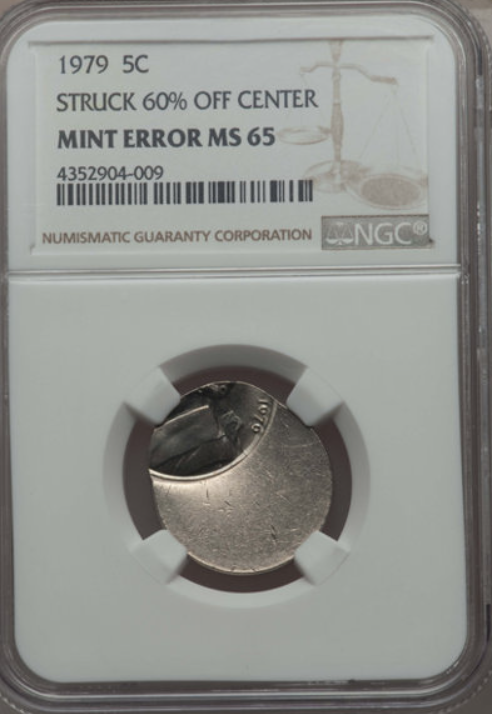
To make a coin, feeder fingers position the planchet smack between the dies in the stamping press. But if the blank lands slightly off-center, you get a misalignment mistake that leaves part of its surface unmarked. This empty space is described in percentages. Here, 60% of the lower obverse and upper reverse stayed blank. An MS 64 was $46 while an MS 66 was $62.
1979 (P) Nickel Struck Thru Late Stage Die Cap Error
Hundreds of coins pass through the stamping press every minute. And sometimes, a coin blank gets stuck on the die, blocking the next planchet that’s fed into place. This obstruction will disrupt the design on the coin that’s above or below it since the blocked coin doesn’t get into direct contact with the die. It’s called a die cap error, and in AU 58, this one sold for around $47.
1979 (P) Nickel Struck on 35% Off-Center on a Curved Clip Planchet
When planchets enter the mint, they’re in a large coiled sheet that gets fed into a blanking machine to be flattened and punched into discs. The leftover metal is full of holes and is sent for recycling. But sometimes, a coin is struck on that residual meal so it may have a curved clip near the hole or a straight clip near the edge. Add the 35% off-center for roughly $65.
1979 (P) Nickel Double Struck 85% Off-Center with Flipover
Coins are struck at least twice to ensure the design transfers fully. But sometimes, a complete coin is struck again as it exits the mint, probably due to a lag within the feeder fingers. Here, the delay also flipped the coin so the second strike was on the opposite side. It was also 85% misaligned so the coin shape got deformed. Graded MS 62, the triple error sold for around $95.
1979 (P) Nickel Struck on a Penny Planchet
Every coin has its own diameter and weight set by law. So when a coin is struck on a coin intended for a different denomination, it may end up being a different mass. It might even have the wrong color! Here, nickels are struck on 1c blanks so they’re red, weigh about 3g, and some design details are sliced off the smaller coins. The prices range from $158 to $424.
1979 (P) Nickel Defective Planchet Error
The quality of a planchet can affect how well the coin is struck. If the blank is defective, it may disintegrate when the dies hit it since the die pressure can make the weaker bits of metal crumble. This might cause a lamination error where sections of metal might shear off. Or it could be a blow hole, worth $250 in AU 58. Or even a lightning bolt crack for $200 in MS 65.
1979-D Nickel Double Struck Rotated with Reverse Indent
When a coin has multiple mint mistakes, its cumulative value rises exponentially. We’ve already talked about double strikes, and an indent is clear enough. But a rotation is when the sides of the coin aren’t fully aligned at 180°. The rotation here made the double-struck words on the back of the coin overlap e.g. States and America. In MS 65, this nickel sold for $150.
1979-D Nickel Double Struck 65% Off-Center with Brockage Reverse
This mint mistake combines several earlier ones. We’ve looked at double strikes, off-centers, and rotations. We also explained die caps. For reference, the die cap is the blank that does the blocking. But the obstructed coin below is often described as a brockage. Here, a reverse brockage blurred the front design onto the back. In MS 65, all these mistakes sold for $550.
1979 Nickel 20% Off-Center Struck on a Penny Planchet
Let’s look at an especially expensive error combo. It involves two of the flaws we’ve already explored. The nickel was struck on a penny planchet, so it has a truncated design, weighs 3g or so, and is copper-colored. But the 1c planchet was misaligned as well, so its lower front and upper back are unmarked. In MS 65 RD, this mint error fusion sold for over $1,000.
1979 (P) Nickel Struck on a Steel Washer
In the early days of the nickel, counterfeit detectors protested that their machines wouldn’t recognize the coins. This is because the anti-theft devices were fitted with magnets to detect steel fakes that people tried to pass as coins. In this scenario, it’s the opposite situation since a 5c design was struck on a steel washer! In MS 64, this 2.5g ‘coin’ sold for around $4,800.
1979 (P) Nickel Overstruck on a Penny
This mint mistake is sometimes called a double denomination. It’s when a finished coin gets back into the stamping press and is somehow re-struck with the design of a different coin. In this case, it was a 5c coin overstruck by a 1c die. And the design is flipped and rotated so you can see the Lincoln Memorial cutting across Jefferson’s face. In MS 65 RB, it sold for $900.
Also read: 14 Most Valuable Nickel Errors Worth Money
Where to Sell Your 1979 Nickel ?
Now that you know the value of your coins, do you know where to sell those coins online easily? Don’t worry, I’ve compiled a list of these sites, including their introduction, pros, and cons.
Check out now: Best Places To Sell Coins Online (Pros & Cons)
1979 Nickel FAQ
Does a 1979 Nickel Have a Mint Mark on it?
Yes. San Francisco and Denver coins have S and D mint marks respectively. They’re on the obverse after the mint date. But Philadelphia Nickels didn’t have any mint marks in 1979.
How Much is a 1979-S Nickel Worth?
Currently, a 1979-S Type 1 Filled-S Nickel in PR 70 DCAM is worth $80. This is the perfect grade and the highest possible rating, but the price is low because PCGS has graded over 350 pieces. And a PR 69 DCAM is $15 with over 10,000 known. As for 1979-S Type 2 Nickels with a Clear-S, a PR 70 DCAM goes for $300 in October 2023 since PCGS has received nearly two hundred submissions so far. One step down, a PR 69 DCAM is a measly $15 since PCGS has seen over 7,500 Proof Nickels in this grade. They’ve also graded almost 300 as PR 68 DCAM.

